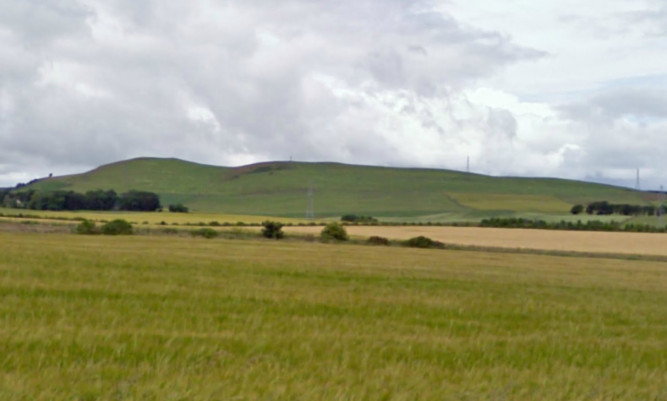Developers behind a windfarm by the A90 in Angus have gone back to the drawing board.
The planning application for five 100-metre turbines at Finlarg Hill, four miles south of Forfar, has been withdrawn by Polar Energy (Finlarg) Ltd.
Its consultants have signalled that a reduced scheme, for five turbines west of the dual carriageway, has been lodged with Angus Council planners.
A spokesman for Polar Energy said: “It is hoped that the compact design will be more acceptable to planners and residents.
“Correspondence and discussions between Polar Energy, their consultants Atmos Consulting and Angus Council throughout 2012 and early 2013 indicated that the scale of the original scheme was considered by the planning officers and some local residents to be too great for the location in terms of its potential landscape and visual impacts, particularly its residential amenity.”
The Ministry of Defence also objected to the plans on the grounds the windfarm would cause “unacceptable” impact on radar stations. Several options have been presented to Angus Council between March and May.
Angus Council’s Renewable Energy Implementation Guide (June 2012) notes that the landscape character at Finlarg Hill is “considered to have scope for turbines circa 80m in height, which do not disrupt the principle ridgelines or adversely affect the setting of important landscape features monuments, such as Kinpurney Monument and Auchterhouse hill fort”.
The firm said advice received from Scottish Natural Heritage (SNH) during the application process also suggested that alternative options for a smaller and more contained scheme should be investigated.
The Polar Energy spokesman said: “In comparison with other windfarm proposals in Angus, there were relatively few objections to the original scheme from the public.
“However, Polar Energy has decided to take heed of the council and SNH’s design advice.”
A number of residents objected to the initial plans, mainly on the grounds of landscape impact and visual amenity and proximity to the A90.
Peter Croll wrote: “The sheer size of the turbines and movement of the rotating blades will be a source of distraction to residents and road users of the nearby A90.
Graham Lang said: “The impact on visual amenity in the recent assessment by the applicant draws its conclusions based on the orientation of the properties in relation to the position of the turbines and ignores impact on receptors using their amenity ground and travelling from and returning to their properties.
“For that reason, using the template submitted, the assessment underestimates the impact on receptors of the highest sensitivity.”
The new layout hopes to retain turbine efficiency while reducing the overall distances of turbines to residential properties.
The firm said this would reduce the scheme’s spread by more than 50% from properties to the east and will “further improve the scheme in terms of its potential impact on residential amenity”.
Polar Energy said the total installed capacity of the windfarm would be 4MW, which would generate clean electricity to meet the annual domestic electricity consumption equivalent to around 2,200 homes.
Over its 25-year life, it is estimated that the windfarm could displace almost 10,000 tonnes of CO2 that would otherwise have been produced by burning fossil fuels, like coal or gas.
Polar Energy now hopes that both public and planners will find the new size and layout more acceptable and that the increased economic benefit to the community will outweigh the perceived visual and residential impact.
Once validated, a copy of the planning application, environmental statement and supporting plans and drawings may be viewed on the Angus Council website.
